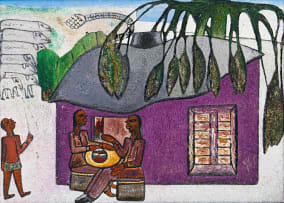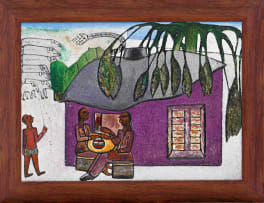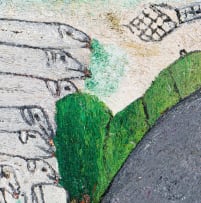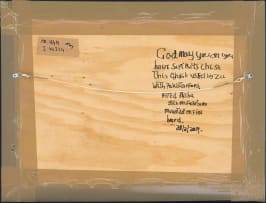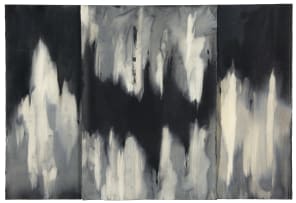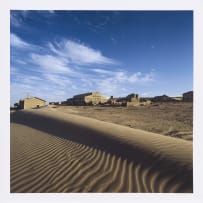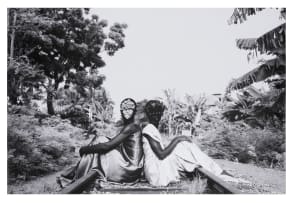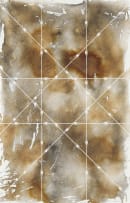Curatorial Voices: African Landscapes, Past and Present
Live Virtual Auction, 19 February 2024
Curatorial Voices: African Landscapes, Past and Present
About the SessionFrom Thomas Baines to Jake Aikman, Curatorial Voices: African Landscapes, Past and Present will showcase art by pioneering modernist and trailblazing contemporary artists, spanning 175 years of visual landscape painting on the African continent. This comprehensive auction reveals a nuanced understanding of the diverse cultural, historical, and environmental contexts that have shaped artistic representations of the landscape. Through an examination of various themes, the auction seeks to engage viewers in a dialogue that transcends time and space, connecting past representations to contemporary perspectives. The auction attempts to engage with the diversity of artists that have shaped and continue to shape the depiction of Africa through time.
The auction invites viewers on a captivating journey through the artistic expressions that mirror the multifaceted nature of African terrain. Through meticulous curation and insightful analysis, the catalogue aspires to be a valuable resource for scholars, art enthusiasts and anyone eager to embark on a thought-provoking exploration of Africa’s rich and complex artistic heritage.
Curatorial Voices
Recognising the dynamic discourse surrounding African Landscape, both past and present, the auction features texts by invited contemporary curators responding to the auction selection and themes. As external voices, they provide critical insights into the complexities of the landscape theme. By amplifying these contemporary perspectives, the exhibition seeks to bridge the gap between traditional representations and the ever-evolving discourse on the role of African art within the global art market.
Azza Satti, Independent Curator, Kenya
Azu Nwagbogu, Founder and Director of the African Artists’ Foundation (AAF), Nigeria
Camilla van Hoogstraten, Head of Sales, Latitudes Online
Ugoma Ebilah, Curator, Gallerist & Founder of Bloom Art
Nkgopoleng Moloi, Independent Curator, South Africa
Incl. Buyer's Premium & VAT
About this Item
signed, dated 28.2.2019 and inscribed with the title on the reverse
Notes
Alfred Thoba is best known for his narrative paintings featuring richly detailed paint treatments. These two aspects of his paintings - image and technique - are indivisible. Thoba never discussed his influences or professional associations, but his time-honed style has many precedents. Thoba's vivid iconography and moral vision recall George Pemba at his most allegorical and exuberant, as well as Trevor Makhoba, a painter of complex moral fables. Thoba's flattened picture planes and simplified detailing of his subjects have precedents in African-American modernists like painters Horace Pippin and Jacob Lawrence, too. His tendency to crowd human figures into theatrically arranged painterly space recalls the pictorial design of medieval Christian altarpieces.
These correspondences should not detract from a key fact: Thoba was an autodidact who in 1974, at age 23, declared himself a full-time artist.1 Little is known of his early work. Matsemela Manaka, Steven Sack and Gavin Younge do not mention him in their books from the 1980s. Thoba first achieved public notice in 1988 when he exhibited a stylised interpretation of the 1976 Soweto uprising in Johannesburg. Painted in flat, bold colours a year earlier, 1976 Riots presents a clustering of five black figures in a rudimentary landscape. The political subject matter marked a shift from the erotic themes of Thoba's earlier work. The eroticism endured, but was increasingly complemented by a social vision marked by themes of gregarious companionship, moral conflict and - in this genial scene - religious devotion.
Thoba's work of quiet abundance depicts two seated figures in front of a house swaddled by a large-leaf tree, flanked at left by a child gesturing to domestic animals. The title infers any number of Christian scriptures referring to God's grace. Thoba's non-naturalistic style of painting prompted some critics to characterise him as an outsider artist. Elza Miles likened his Christian themes to those of polio-stricken Calvin Lekoane, who painted with his feet.2 Esmé Berman likened Thoba to Tommy Motswai and Clifford Mpai.3 There are certainly similarities in their pictorial approach, but Mpai worked with pencil, while Thoba is noted for his painterly technique. 'It is obsessive, time-consuming work, and the quality of his attention to detail is clearly reflected in the intricacies and nuances of the finely teased paint.'4
1.Hayden Proud (2006) Revisions: Expanding the Narrative of South African Art, Pretoria: UNISA Press, page 266.
2. Elza Miles (1997) Land and Lives: A Story of Early Black Art, Cape Town: Human & Rousseau, page 121.
3. Esmé Berman (1993) Painting in South Africa, Cape Town: Southern Book Publishers, page 358.
4. Rory Bester (2022) 'Artist Focus: Alfred Thoba - Separate, and Outside', in The Oliver Powell and Timely Investments Trust Collection (Strauss & Co catalogue), page 40.

